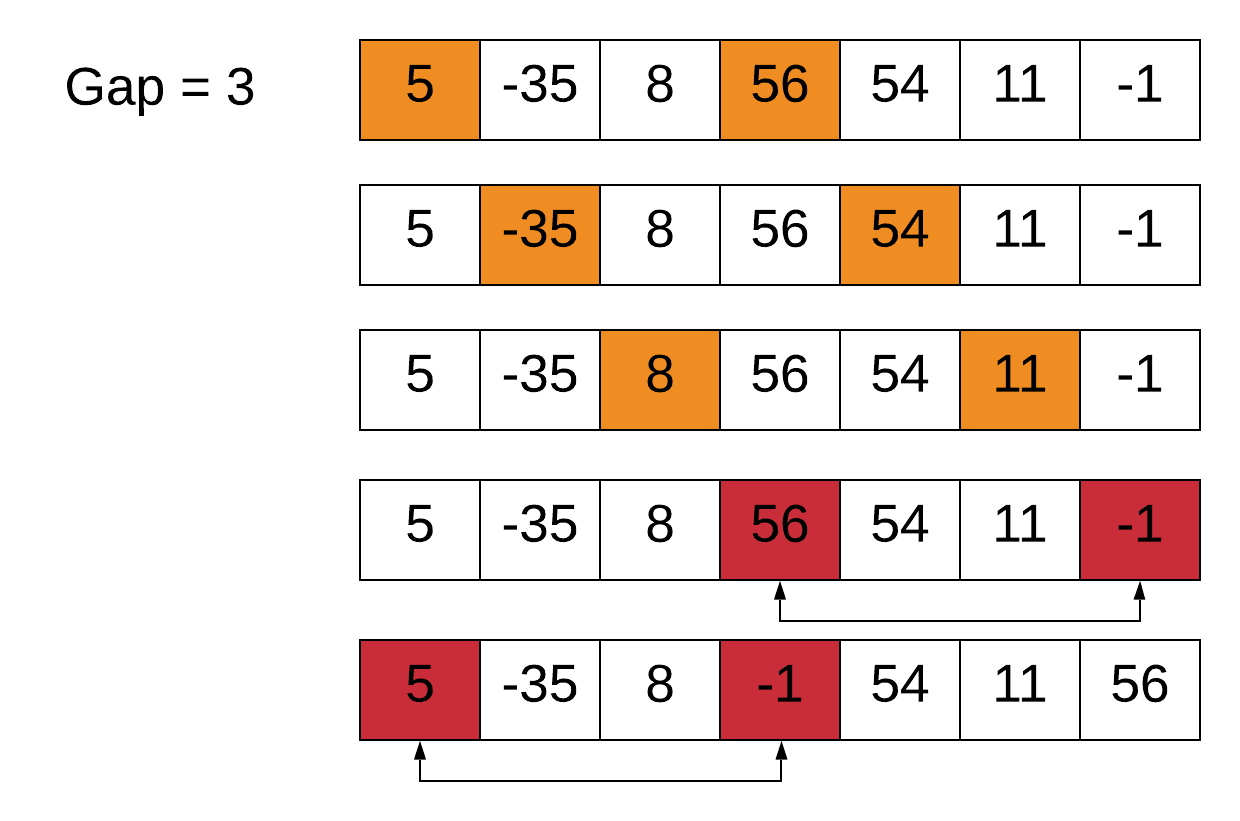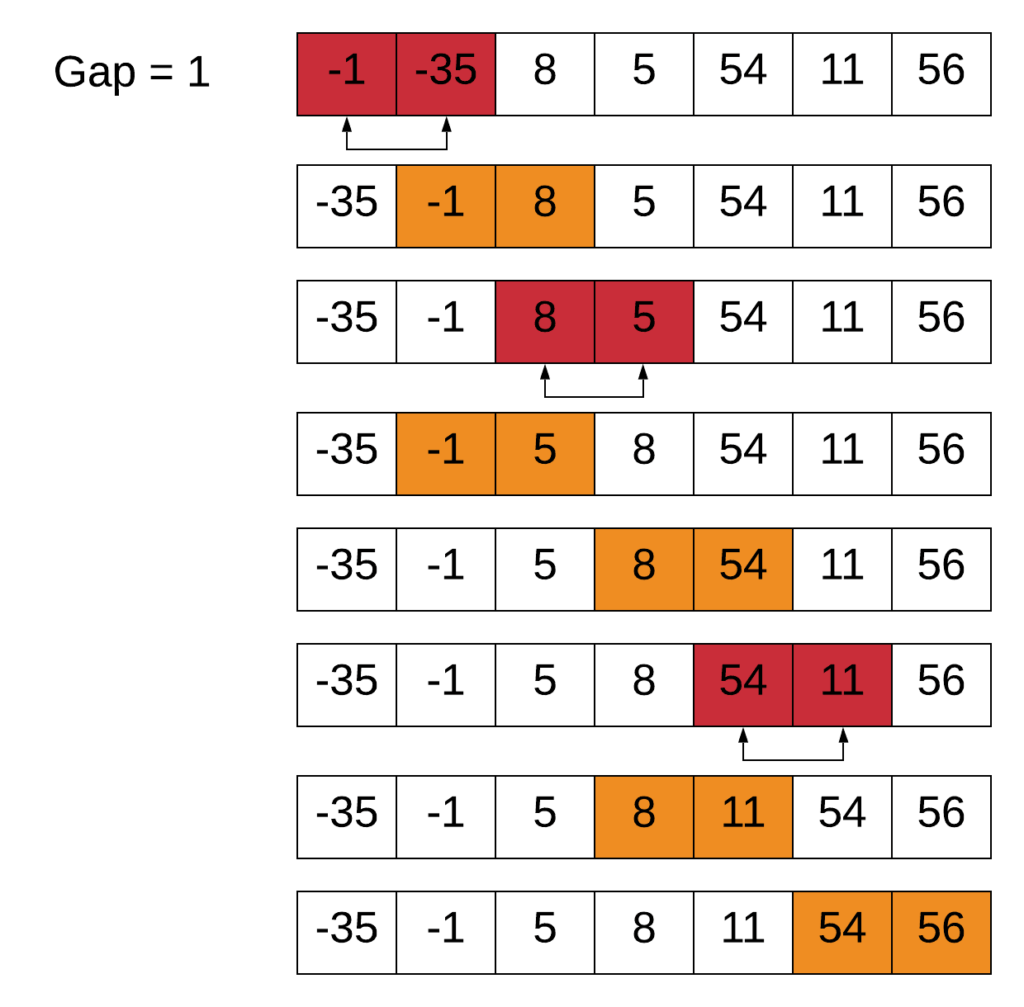The Shell Sort Algorithm is a fascinating sorting technique that enhances the efficiency of traditional sorting methods. It was devised by Donald Shell in 1959 and has since become a popular choice for sorting large datasets. By introducing the concept of "gap" sorting, this algorithm allows elements to be compared and swapped over larger distances before narrowing down the gaps, ultimately leading to a more organized list in fewer operations. This innovative approach makes the Shell Sort Algorithm a noteworthy subject in the realm of computer science and programming.
In an era where data management is crucial, understanding various sorting algorithms is essential for developers and data scientists alike. The Shell Sort Algorithm stands out not only for its efficiency but also for its simplicity in implementation. It serves as a bridge between simpler algorithms like insertion sort and more complex ones such as quicksort and mergesort. The blend of practicality and theoretical elegance makes it a valuable addition to any programmer's toolkit.
As technology continues to evolve, so do the algorithms we use to manipulate data. The Shell Sort Algorithm exemplifies how innovative problem-solving can lead to more effective solutions. With a keen understanding of this algorithm, programmers can enhance their sorting techniques, making their applications faster and more efficient. Let’s delve deeper into the intricacies of the Shell Sort Algorithm and uncover what makes it tick.
What is the Shell Sort Algorithm?
The Shell Sort Algorithm is an extension of the insertion sort, which allows the exchange of items that are far apart. The algorithm works by dividing the list into smaller sublists, each of which is sorted using a simpler algorithm like insertion sort. These sublists are created based on a series of gaps that gradually decrease, allowing for efficient sorting of elements that are initially distant from each other.
How Does the Shell Sort Algorithm Work?
The operation of the Shell Sort Algorithm can be broken down into several key steps:
- Choose an initial gap size, generally half of the total number of elements.
- Sort elements that are a specified gap apart from each other.
- Reduce the gap and repeat the sorting process until the gap size is reduced to one.
- Finally, perform a standard insertion sort on the entire list.
What Are the Advantages of Using the Shell Sort Algorithm?
The Shell Sort Algorithm offers several advantages that make it a preferred choice for many developers:
- Improved performance over simple algorithms like insertion sort.
- In-place sorting, which means it requires minimal additional memory.
- Versatility, allowing for adjustments in gap sequences based on specific needs.
- Relatively easy to implement and understand.
What Are the Disadvantages of the Shell Sort Algorithm?
Despite its advantages, the Shell Sort Algorithm does have some drawbacks:
- Performance can vary significantly based on the chosen gap sequence.
- Not as efficient as more advanced algorithms like quicksort for larger datasets.
- Inconsistent time complexity, which can lead to unpredictable performance.
How Does the Shell Sort Algorithm Compare to Other Sorting Algorithms?
When comparing the Shell Sort Algorithm to other sorting algorithms, it is essential to consider various factors such as efficiency, memory usage, and implementation complexity. Here’s a brief comparison:
| Algorithm | Time Complexity (Best) | Time Complexity (Average) | Time Complexity (Worst) | Space Complexity |
|---|---|---|---|---|
| Shell Sort | O(n log n) | O(n^(3/2)) | O(n^2) | O(1) |
| Insertion Sort | O(n) | O(n^2) | O(n^2) | O(1) |
| Quicksort | O(n log n) | O(n log n) | O(n^2) | O(log n) |
| Mergesort | O(n log n) | O(n log n) | O(n log n) | O(n) |
When Should You Use the Shell Sort Algorithm?
The Shell Sort Algorithm is best suited for scenarios where:
- The dataset is moderately sized and does not warrant the overhead of more complex algorithms.
- Memory usage is a concern, and an in-place sorting algorithm is preferred.
- You want to implement a simple sorting solution that can be easily understood and modified.
How to Implement the Shell Sort Algorithm in Code?
Here is a basic implementation of the Shell Sort Algorithm in Python:
def shell_sort(array): n = len(array) gap = n // 2 # Start with a big gap, then reduce the gap while gap > 0: for i in range(gap, n): temp = array[i] j = i # Shift earlier gap-sorted elements up until the correct location for array[i] is found while j >= gap and array[j - gap] > temp: array[j] = array[j - gap] j -= gap array[j] = temp gap //= 2 # Reduce the gap for the next element return array
What Are the Real-World Applications of the Shell Sort Algorithm?
The Shell Sort Algorithm finds its utility in various real-world applications such as:
- Sorting large datasets in database management systems.
- Organizing data for search algorithms.
- Processing data in embedded systems where memory is limited.
- Implementing sorting in applications with strict performance requirements.
Conclusion: Is the Shell Sort Algorithm Worth Learning?
In conclusion, the Shell Sort Algorithm is a powerful yet straightforward sorting technique that stands the test of time. While it may not be the fastest algorithm for every scenario, its unique approach to sorting makes it an excellent choice for many applications, particularly when memory usage is a concern. Whether you are a novice programmer or an experienced developer, understanding the Shell Sort Algorithm can greatly enhance your coding repertoire.
Unmasking The Truth: Is Your Facebook Email A Fake?
Mastering Architecture Repository Management: A Comprehensive Guide
Unveiling The Mystery: Where To Locate Your Driver's License Number


